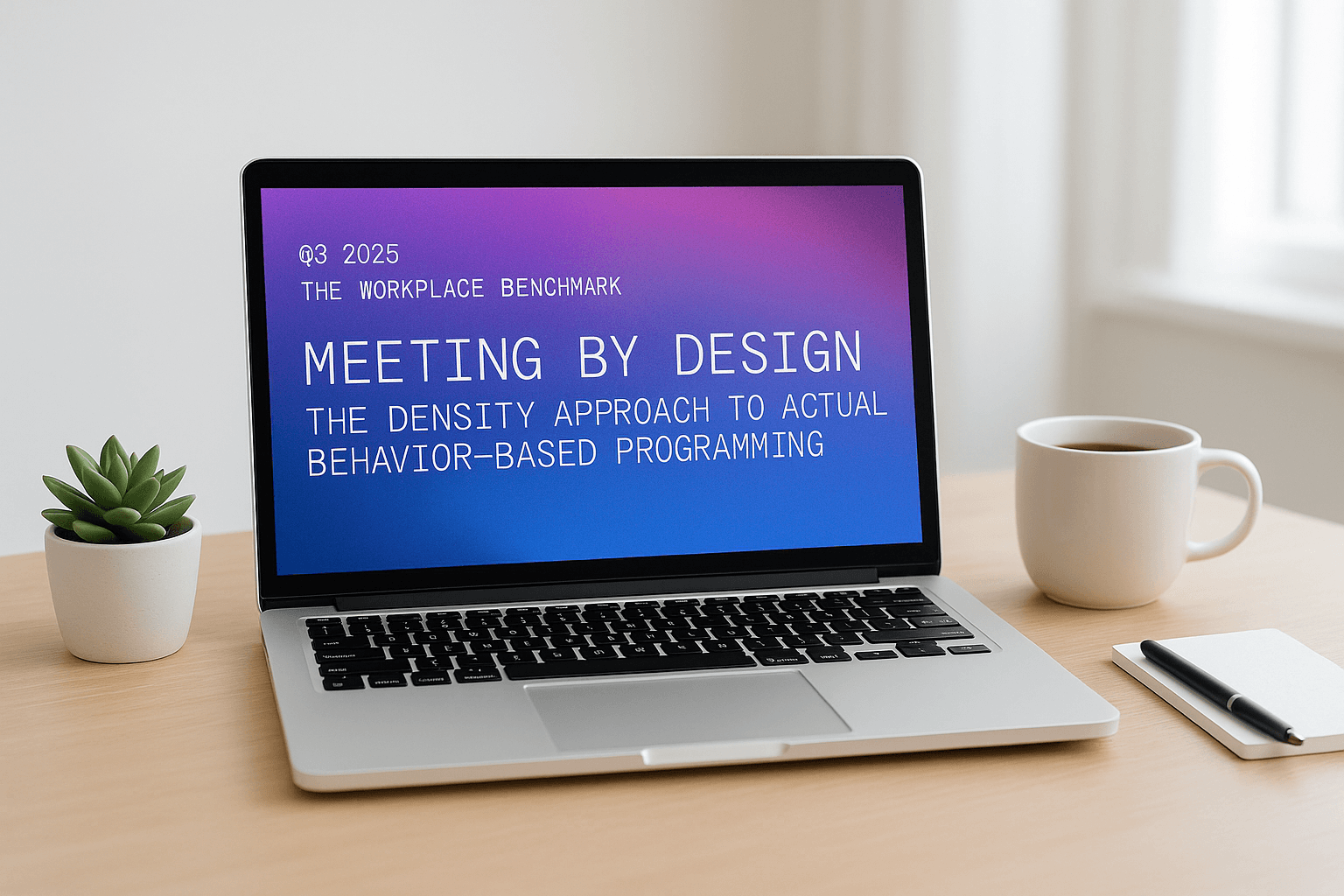Meeting space playbook: programming ratios that really work
Forget static formulas. This new research-driven playbook shows how to use real behavior to right-size your office for today’s meetings.

Walk into any office on a Tuesday morning and you’ll see the same scene: A 12-person boardroom hijacked by a three-person huddle, while other employees wander the floor hunting for meeting space.
It’s not just an annoyance. It’s a money pit.
Across millions of square feet of office space we studied, our data shows that 61% of meetings misuse rooms. That’s small groups spreading out in big spaces, solo workers camping in four-tops and other types of “supersizing.” On average, that misuse translates to about $40K+ wasted per floor, per year.
That’s not a rounding error. That’s someone’s salary or in any case, a serious line item.
The myth of the perfect ratio
Here’s the kicker: Offices aren’t short on rooms. Most floors are built with enough supply—sometimes more than enough. And yet, somehow, people still can’t find the right space when they need it.
Why? Because the math that governs workplace design—the “programming ratios” that influence how many small, medium and large rooms get built—hasn’t kept up with how people actually meet.
Traditional ratios assume that if you have a 200-person floor, you’ll need about 5 medium-sized meeting rooms. But in practice, meetings don’t behave that neatly. At peak times, demand spikes in unpredictable ways. Teams upsell themselves into bigger rooms just because they can. And even within the same company, meeting culture swings wildly from one floor to the next.
The result: Space gets wasted, employees get frustrated and collaboration takes the hit.
Density’s actual behavior-based approach
So how do you fix a system that feels broken by design?
At Density, we crunched the data across nearly `1 million square feet in our customer portfolio and turned it into a fresh approach for programming ratios. We call it actual Behavior-Based Programming.
The idea is simple: Instead of relying on guesswork or static ratios, we look at how people actually use space—when demand peaks, how groups “upsize” and which rooms end up overbooked. Then it uses that real-world behavior to recommend a mix of spaces that actually matches demand.
Think of it as flipping the script: Design rooms around behavior, not theory.
Why it matters now
Companies are spending billions to get employees back in the office. But if the return-to-office experience means fighting for rooms, wasting space or burning real estate dollars on empty chairs, that’s a problem.
Better meeting design isn’t a “nice to have.” It’s the backbone of collaboration—and a way to manage costs..
Want the playbook?
We put all of this research—and better programming ratio math—into our latest benchmark report, Meeting by Design: The Density approach to Actual Behavior-Based Programming.
If you’re a workplace strategist, facilities lead or just tired of playing “meeting room musical chairs,” this report is your shortcut to a smarter office.
Key Takeaways

DisruptCRE founder shares how corporate real estate is changing
Companies are moving employees from underutilized offices into "space as a service” options with utilization data.
Watch now
Half of offices are empty but you still can’t find a meeting room
Employees waste up to 30 minutes a day looking for a meeting room to meet in workplaces.
Read moreMost recent
.png)
Room raiders: The office upsizing epidemic
Tiny teams hogging big rooms leave large groups stranded—welcome to the new war for meeting space!

Why empty seats make quiet zones a focus paradise
Relax, workplace planners—low quiet zone utilization rates are expected, leading to happier employees, deeper focus.

The summer office slump is real. And so is the Friday fade.
Office attendance drops to 41% in July—and Fridays in December? Practically extinct at just 21% utilization.

Report: 5 RTO takeaways from Density’s office comeback
Want your RTO plan to succeed? See how Density used data to boost collaboration and decision-making.
Explore other Density Products
Atlas for Workplace
Insights for the workplace that help you cut costs and deliver better spaces.
Learn more